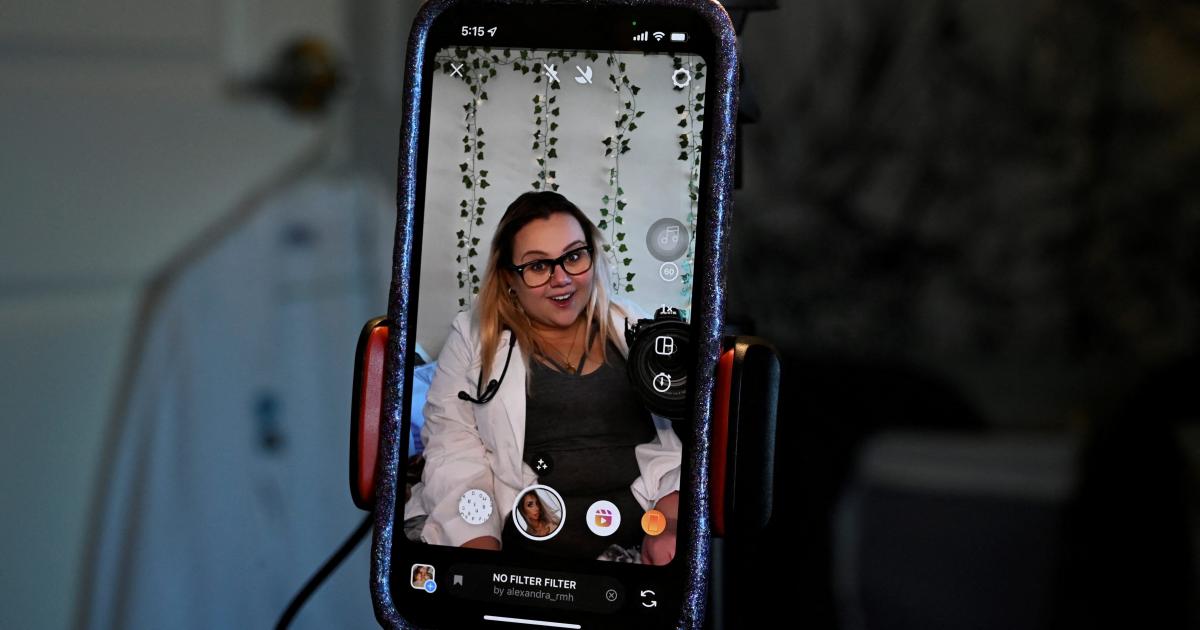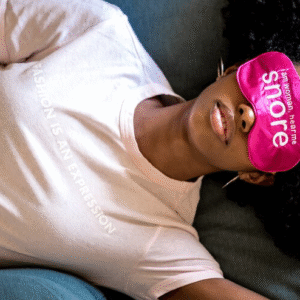It starts with a scroll.
You watch one quick TikTok video on mental health, and then another, and suddenly you’ve spent an hour listening to people talk about anxiety, ADHD, or burnout, and you’re wondering to yourself, “That’s me.”
You don’t lack confidence in yourself. It’s that the TikTok diagnosis makes everything look so clear, so explainable, so… authentic.
And when you’ve spent years being invisible or ignored in doctors’ offices, these TikTok mental health trends are like finally hearing someone speak your language for the very first time.
You’re not imagining that comfort; it’s real. But so are the self-diagnosis risks, because the same platform that can make you feel understood can also lead you down the wrong path.
Symptoms get mixed up. Mental health advice gets oversimplified.
And before you know it, you’re building your mental health plan on thirty-second videos.
So how do you keep the parts of TikTok therapy that feel good for you without defending against the bad?
Throughout this article, we will be guided by Dr. Amanda Long, a licensed clinical psychologist and Black women’s mental health specialist who has seen firsthand the impact social media has on mental health discussion, both negatively and positively.
Sounds good?
Let’s begin.
Why TikTok Mental Health Content Isn’t Professional Therapy

TikTok therapy trends videos can feel like quick therapy sessions. You hear someone describe your brain fog or your constant restlessness and suddenly it all clicks.
Now, this is important: social media mental health content offers relatable stories, not professional evaluations… And honestly, that’s not such a bad thing after all.
There’s no deep exploration of your past, no opportunity to ask questions, and no room for a tailored treatment plan.
What you’re getting is a snippet or a highlight reel of someone else’s mental health journey. And this creates confusion.
Mental health symptoms often overlap across conditions. Trouble concentrating could be ADHD, or it could be depression, anxiety, thyroid issues, or even chronic stress.
Dr. Long told The Love Central that these short videos often “oversimplify complex mental health conditions” by reducing them to quick lists.
While that can be comforting, it’s also misleading.
Take TikTok mental health advice like reading a book by only looking at bold quotes. You get a sense of the story, but not the whole plot.
That’s why it’s important to see TikTok self diagnosis as conversation starters, not final diagnoses, especially if you want to avoid misdiagnosis that could steer your care in the wrong direction.
Why Black Women Turn to TikTok Mental Health Content
For many Black women, mental health stigma starts early.
You might have learned to hide your struggles or to “stay strong” instead of getting help. Maybe at work, weakness was a luxury you couldn’t afford.
These experiences make TikTok mental health trends especially appealing. They offer an open door when so many others have been closed.
Representation plays a huge role in social media therapy. Walk into a counseling room and you might not have someone who seems to resemble you or even comprehends your cultural background.
But browse TikTok mental health, and you can find content creators who talk about culturally aware care, speaking your language, who get your humor, and who listen to your issues without dismissing them.
Dr. Long explained how Black women mental health stigma has often been compounded by healthcare systems that ignore cultural nuance. Black women’s depression, for instance, may manifest in physical exhaustion rather than in sadness. Anxiety may manifest in irritability rather than nervousness.
When specialists deny seeing this, it compels women to seek elsewhere for explanation, and TikTok therapy appears to be a place where the nuances are actualized.
The “Finally Someone Sees Me” Effect of TikTok Mental Health
There’s a unique rush that comes from hearing your inner chaos put into words.
That’s the “Finally Someone Sees Me” effect of TikTok self-diagnosis.
It’s that sharp inhale when a creator describes your exact feelings, down to the way your chest tightens or your thoughts race at night. This is where mental health validation becomes powerful.
As of 2024, 39% of U.S. adults under age 30 say they regularly get their news on TikTok.
Pew Research Center
In Dr. Long’s words, seeing your struggles mirrored in social media mental health content can be “the first step toward getting help.” For Black women who’ve felt invisible in traditional care, this can be life-changing.
The emotional recognition is deep with TikTok mental health trends. You’re not just hearing symptoms, but you’re hearing someone’s lived experience. You’re seeing their expressions, their pauses, the weight in their voice.
That emotional detail can feel more supportive than a clinical checklist.
There’s just one problem: validation is not the same as accuracy.
TikTok therapy videos can make you feel understood without actually describing your condition. This is why social media support works best when paired with professional insight.
TikTok makes you feel seen; a professional ensures you’re seeing the whole picture and not heading toward delayed treatment that could keep you stuck longer than necessary.
The Hidden Risks of Self-Diagnosis

Mental health validation without accuracy can lead to trouble. One of the biggest self-diagnosis risks is the path it sets you on.
If you believe you have a certain condition, you’ll likely start searching for ways to “treat” it, and that’s where the wrong turn happens.
Top risks include:
- Misdiagnosis that leads to the wrong treatment.
- Delayed treatment while following unverified advice.
- Over-identification with a label that blocks other possibilities.
- Harmful coping strategies that may make symptoms worse.
Dr. Long has seen clients convinced they had ADHD after a TikTok mental health binge, only to discover through professional assessment that the actual issue was unresolved trauma or depression.
While they were busy buying planners and productivity apps, the deeper wound went untouched.
And some TikTok therapy coping strategies online aren’t just ineffective; they can make things worse. A grounding exercise might help one person but trigger another.
Without a trained professional to guide you, you’re experimenting on your own nervous system. TikTok self-diagnosis can be a starting point, but it’s not a safe endpoint.
How to Safely Use TikTok Mental Health Content
It all boils down to this: you don’t have to stop watching TikTok mental health trends altogether. You just need to watch them differently, with safe mental health practices in mind..
Practical steps:
- Note what resonates. Did a TikTok mental health video’s example of burnout match your own week? Did a creator’s description of panic attacks feel familiar? Write it down, treat it like a clue and, not a verdict.
- Check it outwith a professional. It could be a therapist, a GP, or a mental health nurse. Bring your notes with you to the session and say, “This is what I’ve been noticing in social media mental health posts, and I want to understand better.”.
- Seek reputable mental health resources. Research reputable mental health resources like the National Institute of Mental Health.
- Blend online and offline support. Join community mental health support groups. Talk to trusted friends or faith leaders.
- Creator gives medical-sounding advice but shares no credentials.
- A one-size-fits-all “hack” like “this works for everyone.”
- The video urges you to skip professional help.
Dr. Long suggested that even without immediate access to therapy, you can still ground your understanding in reliable sources. The goal is to treat TikTok therapy content as a spark for curiosity, not the whole fire.
Expert Tips: Black Women Navigating Social Media Mental Health

For Black women, therapy and online mental health spaces, Dr. Long’s advice is don’t wait until symptoms are severe.
Your exhaustion, your irritability, and your sleepless nights are not minor just because you’ve learned to live with them.
Seek culturally aware professionals wherever possible. That might mean searching directories for Black therapists like TRUE Space or Therapy for Black Girls, asking community networks for recommendations, or looking for practitioners trained in culturally informed care.
These professionals are more likely to understand how your background shapes your experience of mental health.
And most importantly, treat online content as a starting point. Use it to learn language for your experiences. Use it to feel less alone, but pair it with real-world care that can assess your health in full and give you personalized mental health guidance.
Dr. Long explained to The Love Central that you’re the narrator of your story, but a good therapist helps connect the plot points. Together, you get both validation and direction.
Your Mental Health Journey: Validation and Safety Combined
Maybe you’ve been scrolling late at night, phone glowing in the dark, watching TikTok mental health videos that seem to read your mind.
You nod, thinking, This is exactly me… why does this feel truer than anything I’ve heard in a doctor’s office?
And then, almost in the same breath, you wonder if you’re pinning your hope on a guess.
That tug-of-war? It’s real. It’s valid.
And it won’t make you naïve; it will make you human.
Desiring to be seen and needing to be sure can go together. And you’ve just armed yourself with tools to hold both.
You now know how to take that rush of recognition from TikTok self-diagnosis without letting it steer you down the wrong road.
You know the risks of TikTok mental health, the power of mental health validation, and the ways to balance social media support with professional mental health that’s grounded in real care.
So the next time a TikTok therapy video hits home, you won’t just feel seen, but you’ll feel steady.
You’ll have the clarity to hold on to the parts that serve you, and the courage to seek the help that heals you because you’re not scrolling for fixes.
You’re writing your mental health story, and that’s more than any trend on TikTok.
READ: TikTok, Social Anxiety, and the Connections We Miss
Ever felt TikTok making you shy away from real-life moments? This piece on social anxiety in the TikTok era dives into why.












